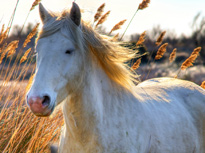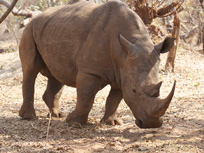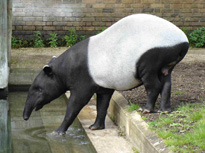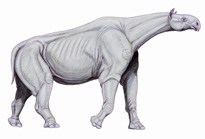Perissodactyla -- Runners with rather pronounced noses!



Origins
Perissodactyls evolved on the Mesozoic continent of Laurasia, diversifying rapidly in what is now North America. The hoofed animals of the Eocene were predominantly Perissodactyls, with thirteen different families evolving and spreading across the globe. Their ranks included some of the largest land mammals to have ever existed, including the Indricotherium which stood over 5 meters tall at the shoulder and weighed an estimated 15-20 tons!

The diversity of perissodactyls has continually declined since the Oligocene, simultaneous with the rise in the artiodactyls, or even-toed ungulates. Only 16 species in 6 genera have survived to the present day (a 17th species, the Quagga became extinct in 1883 due to hunting and habitat loss). Modern perissodactyls are a last remnant of a once exceptionally successful order, and today, with the exception of domestic horses and donkeys, all species are found in relatively low numbers.
What are they like?
In all species, digit III of the toes is the most prominent on all feet, and, as the plane of symmetry of the foot passes through this digit, perissodactyls are said to have a mesaxonic foot. The first digit (equivalent the thumb or big toe of humans) is lost in all species. The Horses have a single functional toe on each foot (the third digit), while the Rhinos have three toes per foot. The Tapirs, the closest family to the ancestral perissodactyl condition,possess four toes on the forefeet (digit V is used on wet or marshy ground) and three on the hind.
Geographic Distribution
View Larger Map
Perissodactyls are found in Asia, Africa, and America in limited populations. Tapirs are found in Central and South America and in southeastern Asia. Rhinos live throughout Central and East Africa below the Sahara Desert and in the tropical region of Asia. Horses are found in eastern and southern Africa and Asia from Near East to Mongolia. Domestic horses live throughout the world, and there are several wild populations in North America and western Australia.
Reproduction
One of the reasons these amazing creatures probably lost out to artiodactyla is that they are slow breeders and have fewer young in their lifetimes. In most species among this group, only the mother stays with the foal and takes care of it. Among horses, though, the females stay in a herd and are jealously guarded by a stallion.
Feeding Habits
This order, unlike the artiodactyla does not have similar digestive structures to get as much cellulose from grass as possible. They also do not have the ability to chew the cud, further hampering their ability to get more nutrition. As a result, they have to continue to forage almost without interruption. They have become running and eating machines.
Families within perissodactyla
Equidae(Horses and Asses)
Tapiridae(Tapirs)
Rhinocerotidae(Rhinos)
Videos